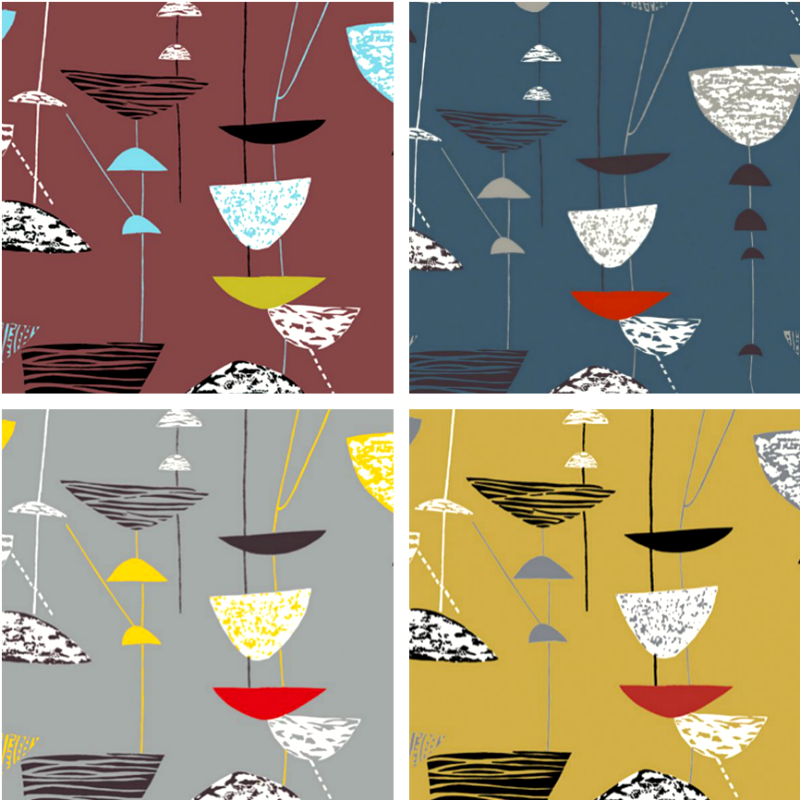Lucienne Day was born in 1917 and became one of the most influential British textile designers of the 1950s and 60s. She drew inspiration from other arts and developed a new style of abstract pattern known as 'Contemporary' design. In the year of the millenium, at the grand age of 83 she offically retired.

Black leaf - tea towel
Lucienne designed patterns for furnishings, dress fabrics, table linen, carpets, wallpapers and ceramics.
Her designs are still being produced today demonstrating the continuing vitality of her design legacy.
Lucienne's designs brought joy and colour into domestic homes following the austerity of the war years.
Lucienne designed patterns for furnishings, dress fabrics, table linen, carpets, wallpapers and ceramics.
Her designs are still being produced today demonstrating the continuing vitality of her design legacy.
I can think of several current designers, printmakers, and illustrators who appear to have been inspired by Lucienne. Amusingly what I think of as contemporary, the younger generation consider 'vintage'. They have rediscovered her designs and appear to love them.
In later life she began making individual silk mosaics. She is pictured here with her silk mosaic 'Three Daughters of Mexico' which she made for the Senior Common Room at the Royal College of Art, and where she celebrated her 90th birthday with many old friends from the design world.

Jack Sprat - tea towel






















































